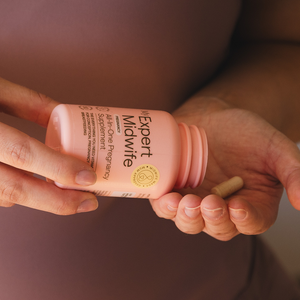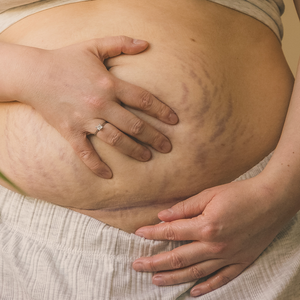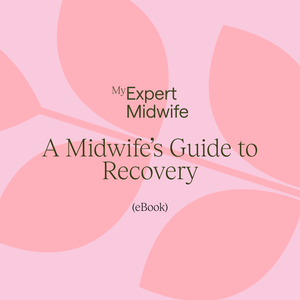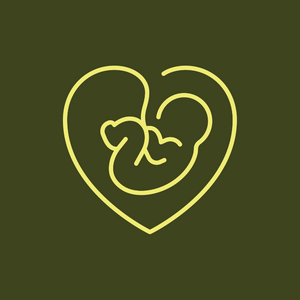Introduction
A Caesarean section, also called a C-section, is an operation that is performed on a pregnant woman to deliver her baby or babies.
Around 25% of babies in the UK are born via a C-section. Of these, about 10% are planned caesareans. The other 15% are emergency caesareans.
Elective C-sections are planned ahead of time – having been chosen by or recommended to you, discussed with your obstetric team, booked (given a date) and consented to well in advance of the procedure, which commonly takes place at around 39 weeks of pregnancy.
Reasons for having a planned C-section
Reasons why you may choose, or be recommended to deliver your baby by, a scheduled c-section include:
- Carrying twins, triplets, or more babies
- Your placenta covering the os (the opening via which your baby would exit your womb), known as placenta praevia
- Having had one or several previous C-section/s
- Having experienced a previous traumatic birth
- Your baby having a condition that could make going through labour and a vaginal birth risky
- You have underlying conditions, such as high blood pressure, which can put your health at risk if you undergo labour and pushing.
- Previous life experiences which may make the thought of a vaginal birth very difficult for you
What happens before a planned C-section?
1. Decision
Your pregnancy will determine the birth of your baby via a planned, or elective, C-section.
Sometimes, this will happen early on in your pregnancy. For example, if you’ve had previous caesareans and opt to birth your baby this way again.
In such cases, you’ll see the obstetric team around the time of your dating scan - if you’ve chosen to have one – and the team will document your decision for a planned C-section. There are both benefits and risks to a planned caesarean birth, so it is essential to consider your decision carefully. You’ll then see the doctor again in your third trimester to schedule a date for your operation and your pre-op appointment.
2. Pre-op appointment
Once you and your obstetric team have decided that a planned C-section is your chosen method to birth your baby, you’ll come to the hospital a couple of weeks before the date of your operation for your pre-op appointment, during which:
- Your doctor will talk you through the procedure and discuss any potential risks
- You will need to sign the consent form
- You will have blood tests to check your iron levels, your blood group and your antibody screen
- You may be given some paperwork (this depends on the hospital)
3. The 24 hours before your planned C-section
The day before
Try to keep this day free from any commitments. Rest, relax, wash your hair, watch a good movie/boxset, pack the last few bits in your hospital bag and plan a yummy meal.
The night before
The night before your operation, you will be asked not to have anything to eat after midnight and only drink clear fluids until your procedure. To reduce the risk of aspiration, you can vomit after having your anaesthetic or whilst having your C-section.
Ensure you have a late evening meal or plan a substantial pre-bed snack.
On the day of your C-section
Most women will go into the hospital on the morning of their elective caesarean section, where the doctor or midwife will show you and your birth partner to your bed space/room in the postnatal ward.
Once settled, you will be:
- Given an estimated time for your caesarean delivery. It will depend on the number of elective C-sections scheduled for that day and, in some hospitals, also on the activity on Delivery Suite.
- Given a hospital gown to wear.
- Asked to take out the bare essentials into the operating theatre with you. Typically, a baby-grow, a vest and a hat for your baby.
- You may be given some intravenous (IV) fluids to prevent you from dehydrating if your C-section is delayed.
When they are ready for you in the theatre
- You will be taken to the anaesthetic room next to the operating theatre.
- You will meet the midwife who will look after you and your baby during your operation and the anaesthetic team.
- If they have not already seen you, the surgeon performing your operation will also likely come to greet you and confirm that you are happy to proceed.
What happens in a planned C-section?
1. In the anaesthetic room
Once you are called into the anaesthetic room:
- You will have a cannula inserted (a needle into your vein) - usually into the back of your hand. It will allow for IV (intravenous) fluids and medication to be given to you during and after your operation.
- The anaesthetist and their theatre assistant will help you into an upright sitting position in preparation for the spinal anaesthetic, or spinal block, which will numb your body from the waist down. This enables you to be awake for the operation and meet your baby when it’s been born.
- Very few women will need a general anaesthetic (GA) for their C-section. Reasons for needing a GA instead of a spinal anaesthetic include a blood clotting disorder and issues with your back (congenital or caused by trauma).
- Your midwife will put a urinary catheter in to keep your bladder empty to avoid damage during the operation.
- If you haven’t already done so, your midwife will shave the top of your bikini line, where the incision (cut) will be made.
- The anaesthetist will test your body with a cold spray to make sure you are numb, and you will then be wheeled into the operating theatre.
2. In the operating theatre
- You will be covered in sterile drapes, with a screen placed in front of you, so you won’t be able to see the operation.
- Your birth partner will be able to sit right next to you.
- The anaesthetist will be monitoring all your observations throughout the operation.
- The surgeons will apply cleaning fluid to your abdomen, then make an incision at your bikini line (usually between 10-20cms long)
- The surgeons will move your bladder away and part the abdominal muscles, and another incision will be made into your uterus.
- You may be able to hear a suction noise, as this is needed to clear your waters away once they are broken.
- You will feel some pushing and pulling sensations, and then your baby will be born.
- The time between your skin being cut and your baby being born is surprisingly short – often taking less than 6-7 minutes. (It may take longer if you’ve had previous C-sections, as cutting through scar tissue and adhesions require more time and care.)
- If all is well with you and your baby, you’ll be able to have skin-to-skin immediately, which would be optimal for both of you.
- If this is not possible, your baby will be shown to you and taken to a nearby resuscitaire - a small station where doctors can examine your baby and, if necessary, treat and dress and keep them warm under the overhead lamp.
- Once your baby has been born, the surgeons will ‘mop up’ any blood and fluids that may have gone into your abdominal cavity and begin to suture the several layers of tissue that were cut and parted to allow your baby to be born.
- It can take longer than you might expect to close your wound, as you might need several layers of stitches or staples.
- Once your wound is closed, it will be dressed and you will be transferred to a recovery area.
- From entering the operating theatre to leaving it, the whole procedure usually takes 40-50 minutes.
3. In the recovery area
- Your vital signs (heart rate, blood pressure and oxygen saturation), vaginal bleeding, wound dressing, and staff will closely monitor your general wellbeing.
- You will be encouraged and assisted to continue having or commencing skin-to-skin contact with your baby.
- Your midwife will help you to feed your baby.
- You’ll be given something to eat and drink if you feel up to it.
- You may be given a bed wash or, at a minimum, a freshen-up
- You’ll have time to bond with your baby, share time with your birth partner and message your family and friends.
- Once ready, staff will move you onto the postnatal ward.
What does a planned C-section feel like?
As we are all individuals, every woman will experience their C-section differently.
Commonly, women report feelings of:
- Nausea - Possible feelings of sickness and/or vomiting after their spinal anaesthetic has been given – the anaesthetist will give you anti-sickness medication and IV fluids to help you feel better.
- Tugging and pressure - as the surgeons help your baby to be born, some women describe it as feeling like washing up is being done in their tummy. (It does not mean you’ll feel pain, but you’ll be able to feel movement.)
- Numbness – of course, you’ll expect to feel no pain, but you may not realise that you’ll still be able to feel touch.
- Shortness of breath – usually, only for a short period of time, whilst the surgeons are pushing on your abdomen to help your baby out. Your oxygen levels will be constantly monitored throughout your C-section, so be assured that this will cause you no harm.
- Shivering – the exact reasons for this remain unclear but may be associated with hypothermia (low body temperature) during the operation and higher levels of maternal anxiety.
How to personalise your planned caesarean section
You may want to have some of your wishes for your birth followed during your planned caesarean section. Women now want an adaptable birth environment to enable a calmer and gentler delivery. Most hospitals will discuss your choices with you and try to accommodate these as much as possible.
Things you may want to consider to personalise your planned c-section:
- Make a playlist of music you would like to be played during your birth- most hospitals will have the facilities to play your choice of music in the operating theatre.
- You may want to have the drape lowered so you and your partner can see your baby being born- ask if this would be possible at your antenatal appointment.
- Discuss your options surrounding delaying clamping of the umbilical cord - current advice from The World Health Organisation is for between 3-5 minutes. Benefits for your baby include the prevention of anaemia and an increased transfer of stem cells.
- If your baby does not need any resuscitation, then you should be able to have skin-to-skin contact immediately. Your baby does not need to be weighed before this happens, and if you have chosen to have the vitamin K injection, this can be given during your skin-to-skin contact.
- Think about seeding the microbiome; this is a relatively new practice, as researchers discovered that babies born via caesarean section were more susceptible to infections than those born vaginally. Swabbing your baby with the friendly bacteria from your vagina is thought to colonise your baby’s skin and gut, helping to promote a healthy start to life.
How long does it take to recover from a planned C-section?
Recovery from a C-section is not something that you can time. It is a continuous healing process and slowly getting back to satisfactory levels of activity and fitness.
As with vaginal births, though, it is essential to know and accept that our bodies are unlikely ever to feel like they did pre-pregnancy and pre-C-section. And this is okay and normal.
A C-section birth is major abdominal surgery, and every woman’s recovery journey will be different:
- Your abdominal muscles are likely to feel quite sore because they will have been parted during your C-section. They have also supported your growing womb and may be weak during pregnancy.
- Different layers of tissue will be cut during the surgery and stitched back together, and these will need time to heal.
How to recover from your planned c-section at home
Avoid moving and lifting
Try to avoid moving and lifting things and have everything you need close by. Learn to slowly turn to your side and push yourself up with your top arm to get out of bed. Also, use plenty of cushions to help comfort and posture and make holding and feeding your baby easier. Hold a small pillow/cushion against your lower tummy when getting up from the sofa, bed, car, or stairs. This also provides welcome support when you laugh or cough.
Stay well nourished
Nourishment will be crucial to recovery and the healing process, so ensure you are eating healthy, nutrient-dense foods. Ask your family and friends to bring you cooked meals instead of flowers, and leave your freezer well stocked up with pre-cooked home meals.
Rest, rest and rest some more!
Arrange for help and support from your loved ones, so daily chores, food prep, childcare for older siblings, and general life are taken care of. Do as little as you can and allow yourself to be looked after.
Look after your scar
Pay close attention to your scar. The dressing should come off after approx. 5-7 days. If you had staples (rare nowadays), these would need to be removed by your midwife. Prepare a ‘wound-care station’ with gauze or cotton wool, a bowl for warm water, a clean towel to pat dry the area and Spritz for Bits so that you can clean and look after your scar daily. And have at least 10 minutes a day to ‘air’ your wound by lying back, removing clothing and allowing air to reach your wound. If your tummy hangs over your c-section scar, gently lift it with your hands and hold it up.
Use a perineal spray
We recommend using a perineal spray such as Spritz for Bits during the first few weeks after the birth. Once the dressing has been removed and your wound is healing normally, use Spritz for Bits as often as needed to help relieve soreness and itchiness.
Use bath salts
A regular self-care routine, including a soothing bath, can contribute to your physical and emotional recovery after childbirth. Add in some Soak for Bits Bath Salts to help with relaxation.
Both products are packed with essential oils that have anti-inflammatory and anti-bacterial properties to help soothe swelling and bruising and clean and protect.
Massage your scar with oil
We recommend using our Super Scar Recovery Oil. Once your wound is considered well healed (usually around six weeks after your C-section), start using Super Scar Recovery Oil. It has been expertly developed to help improve the appearance and condition of scar tissue through regular C-section scar massage.
In summary
This article is a step-by-step on what to expect from a planned C-section so you can be fully prepared for when the time comes. It will help you and your partner relax and look forward to your baby’s birth. Speak to your doctor or midwife for more expert advice if you have any specific queries and wants.



















